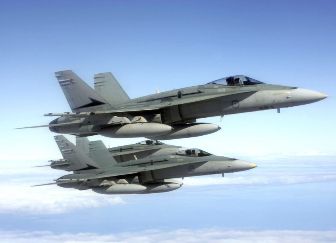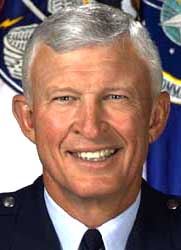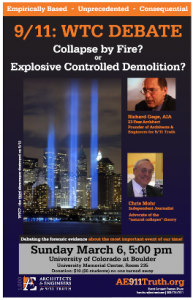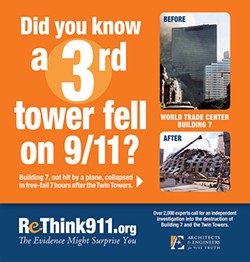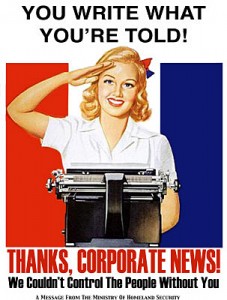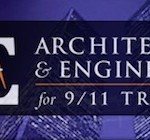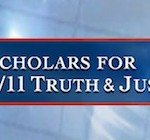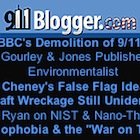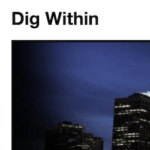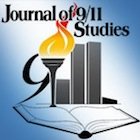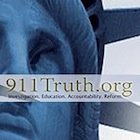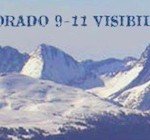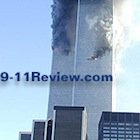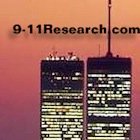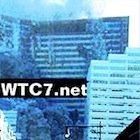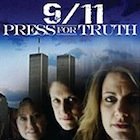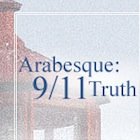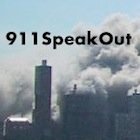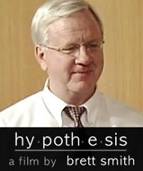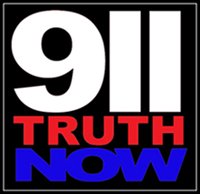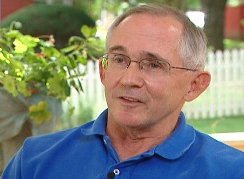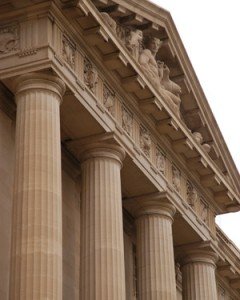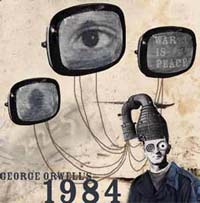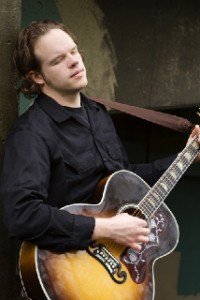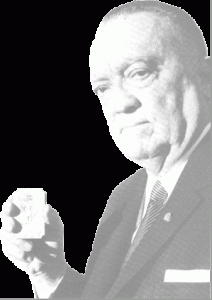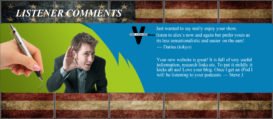From the History Commons Groups blog:
A large number of entries have been added to the Complete 9/11 Timeline at History Commons, most of which provide important details about the actions of President George W. Bush and his entourage on September 11, 2001.
President Bush Visited a School in Florida
President Bush received his daily intelligence briefing early in the morning of September 11, but the briefing included nothing about terrorism. A short time later, numerous members of his staff learned that a plane had crashed into the World Trade Center as his motorcade headed to the Emma E. Booker Elementary School in Sarasota, Florida, and yet no one told him what had happened at that time.
Bush was told about the crash for the first time by Deborah Loewer, director of the White House Situation Room, after his limousine arrived at the school. Subsequently, his senior adviser, Karl Rove, also told him about the crash. However, the president still took his time chatting with members of the official greeting party at the school, even though he was told he had to take an important call from National Security Adviser Condoleezza Rice.
Secret Service agents who were with the president were unable to obtain any information about the crash at the WTC from their colleagues in Washington, DC, after they arrived at the school. Meanwhile, Mike Morell, Bush’s CIA briefer, called the CIA’s operations center when he reached the school and learned that the North Tower had been hit by a large commercial airliner. But personnel on Air Force One were unable to obtain precise information about what was happening, even after the second hijacked plane crashed into the WTC, at 9:03 a.m., and one officer wondered if a nation-state was behind the attacks.
Despite what had happened in New York, Bush decided to continue with the scheduled event at the school and at 9:02 a.m. entered a classroom to listen to the children there reading. A short time later, Andrew Card, his chief of staff, learned that a second plane had hit the WTC, and immediately thought Osama bin Laden and al-Qaeda were responsible. Minutes later, Card entered the classroom and told the president that America was “under attack.”
White House press secretary Ari Fleischer then held up a message for the president, instructing him, “DON’T SAY ANYTHING YET.” Bush therefore remained seated and listened to the children reading a story about a pet goat for the next five minutes. Even after the children finished the story, Bush stayed in the classroom to ask them questions and talk to the school’s principal.
Bush’s Staffers Were Concerned that Terrorists Would Attack the School
Major Paul Montanus, Bush’s military aide, wanted the president and his entourage to leave the school when he saw the second crash live on TV, and yet no evacuation took place at that time. And after the second crash occurred, Secret Service agents and other staffers accompanying the president were concerned that Bush could be in danger, with some of them worrying that terrorists might try to attack the school. But even after the reading demonstration ended, Bush was allowed to stay at the school.
Secret Service agents apparently only prepared to get him away from there at around 9:30 a.m. The motorcade only left the school to take the president and his entourage to Air Force One at around 9:34 a.m., more than half an hour after the second attack on the WTC took place.
The Secret Service was concerned that Bush might be attacked by terrorists as he was being driven to the Sarasota airport and provided his limousine with extensive security. During the journey, Bush talked to Condoleezza Rice using a cell phone and she told him the Pentagon had been attacked. The president and his entourage arrived at the airport by around 9:45 a.m. and then boarded Air Force One.
Palestinian Group Reportedly Claimed Responsibility for the Attacks
New timeline entries describe how, around that time, it was reported that a radical Palestinian group called the Democratic Front for the Liberation of Palestine (DFLP) had claimed responsibility for the attacks on the WTC. But a short time later, the group publicly denied being behind the attacks.
Bush asked Mike Morell about the DFLP’s reported claim while Air Force One flew from Sarasota to Barksdale Air Force Base in Louisiana and Morell said the group lacked the capability to carry out the attacks. Morell then called CIA headquarters, spoke to Cofer Black, director of the CIA’s Counterterrorist Center, and was told by him that the agency knew “little beyond what the rest of the world knew” about the attacks.
As Air Force One approached Barksdale, Ari Fleischer told the reporters on board that Bush was being evacuated “for his safety and the safety of the country.” After the plane landed at the base, a member of Congress on board asked Morell who he thought was behind the attacks on the United States and Morell said he was sure al-Qaeda was to blame. Later on, after the plane took off from the base, Bush asked Morell the same question and Morell again answered that he was certain al-Qaeda was responsible.
While he was at Barksdale, Bush argued with his colleagues about where he should go next and was told it was unsafe for him to return to Washington. At 2:50 p.m., after leaving Barksdale, his plane landed at Offutt Air Force Base in Nebraska, where personnel had been preparing for his possible arrival. Remarkably, a local TV channel had people at the base and was therefore able to show live coverage of Air Force One landing there. After getting off his plane, Bush was taken to a command center several stories underground where he was given an update on the attacks.
When Air Force One left Offutt, at around 4:30 p.m., the plane finally headed toward Washington. During the journey to the capital, Morell passed on to Bush all the information the CIA by then had relating to the attacks, which included a warning that a group of al-Qaeda terrorists might be in the US, preparing for a second wave of attacks. Meanwhile, fearing that there could be a biological attack on the US, Dr. Richard Tubb, the White House physician, gave all the passengers on Air Force One a week’s worth of Cipro, a drug used to treat anthrax.
Bush Had Problems Communicating with Washington
Several timeline entries describe the significant problems Bush experienced communicating with his colleagues in Washington while the attacks were underway and throughout the day of 9/11. His attempts at making calls on a secure line while he was being driven from the Booker Elementary School to the Sarasota airport were unsuccessful because all the secure lines were down. And along with his staffers, he had problems communicating with colleagues in Washington after Air Force One left Sarasota.
White House counsellor Karen Hughes tried calling Bush from the capital but, to her alarm, the operator said he was unable to connect her to Air Force One. Additionally, Bush and his staffers were limited in their awareness of the catastrophe that was taking place because the TV reception on the plane was weak and intermittent.
Lives Were Saved by Orders that Kept Police Officers Away from the WTC
A few entries describe incidents that occurred in New York, shortly before and shortly after the first WTC tower collapsed. Numerous members of New York Police Department’s elite Emergency Service Unit avoided dying in the collapse because they were given an order that meant they had to get out of the WTC or delay going into it.
Around the same time, Joseph Morris, a commanding officer with the Port Authority Police Department (PAPD), told numerous PAPD officers to initially stay away from the Twin Towers after they arrived near the WTC and thus likely prevented many of them from being killed when the South Tower collapsed, at 9:59 a.m. After the South Tower came down, Morris ordered that the PAPD’s command bus be moved further away from the WTC and thereby likely prevented those in it being killed when the North Tower collapsed, at 10:28 a.m.
Finally, a couple of entries describe events that occurred before September 11. Around late July 2000, the Joint Forces Intelligence Command held a briefing in which the WTC and the Pentagon were identified as the buildings in the US most likely to be attacked by terrorists. And in June 2001, ABC News reporter John Miller gave a speech in which he discussed the growing indications that Osama bin Laden planned to carry out an attack in the US.
Please consider donating to History Commons, to help it continue as a leading informational source for the 21st century. To make a donation, click here.
